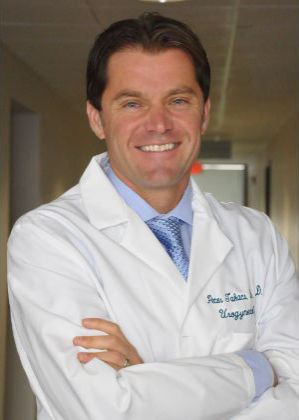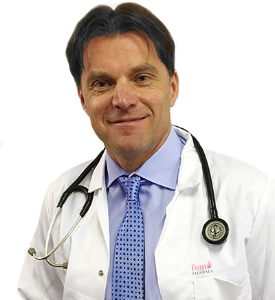





The scientific basis for the development of the Momaid dietary supplement and the idea of the Momaid program was based on Prof. Dr. Péter Takács’s decades long experience in patient care as well as his results in basic and clinical research.

The idea goes back at least fifteen years. I worked in Miami when the question was raised: how could we influence pelvic floor muscle changes in the right direction after giving birth. We have been researching under laboratory conditions for years and then transferring the results to animal experiments. Finally, a series of experiments were carried out at the Department of Obstetrics and Gynecology of the University of Debrecen. This clinical research proved that the Momaid dietary supplement positively affects the strengthening of the pelvic muscles and the speed of recovery after delivery.

Yes, we would like to draw attention to the fact that mothers really should care more about themselves and their health after giving birth. Unfortunately, it is a universal expectation that new mothers should only pay attention to the baby, usually with minimal help and around the clock. According to my experiences, US women are more aware of this and pay more attention to themselves. Already in the first weeks, it is important to realize that there is and will be a life beyond the baby, hence the name of the program. The newborn will be a teenager and then leave home. It does matter what quality of life the mother is left with at the time. For example, you can do a lot for yourself by practicing pelvic muscle exercises. It would be important for a woman to start these during the first pregnancy and then continue it from the sixth week after birth until the end of her life.

During vaginal delivery the pelvic muscles may be damaged. The older the mother, the greater the risk: a twenty year old mother has a 15 percent chance of muscle injury with her first delivery, this chance is over 50% if the mother is over 40. The levator muscle should be conceived as a chalice that surrounds the pelvis. It needs to loosen and open up significantly for the baby to come through. The bladder, the vagina and all internal genital organs rest on this muscle. A permanent change to this muscle can lead to incontinence and sexual problems. The first year after delivery is a unique hormonal milieu, an evolutionary, self-acting, protective mechanism. This is what enabled women to give birth and recover even under unfavourable conditions. It is a unique period from a regeneration perspective.

We have no knowledge of similar research anywhere in the world which would focus on the role of vitamins, minerals and trace elements in maternal regeneration after birth. For this reason, the Momaid program and the product are considered to be world novelties. Utilizing its novelty, our New York patent attorneys were asked to file international patent protection under the title “Pharmaceutical Composition for Postpartum Recovery and Treatment of Pelvic Floor Dysfunction”. (US Provisional Application Number: 62 / 742,404)

Prof. Dr. Peter Takacs
Prof. Dr. Peter Takacs, PhD, professor of obstetrics and gynecology, urogynecologist.
He has more than 20 years of clinical, educational and research experience in the United States. Formerly Head of Translational Gynecological Research at the University of Miami, currently he is the Henry Clay Hofheimer II Professor of Obstetrics and Gynecology and the Division Director of Female Pelvic Medicine and Reconstructive Surgery (Urogynecology) at the Eastern Virginia Medical School. He is an internationally renowned medical researcher. He is also a Ph.D. advisor at the University of Debrecen Doctoral School in Hungary.